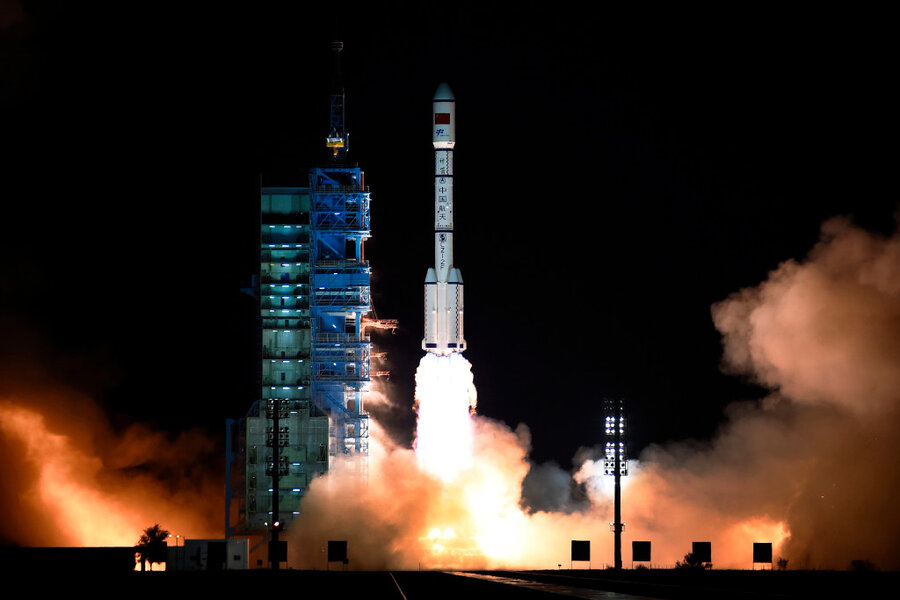China launches first 'cold' atomic clock aboard second space station
Loading...
China launched its second space station, Tiangong-2, from Jiuquan Satellite Launch Center in northwestern China's Gobi desert on Thursday with the world’s first “cold” atomic clock on board – representing a pivotal step in China’s plan to become a major player in the modern-day space race.
Two astronauts are set arrive at the station in October where they will spend one month completing experiments. Running the Cold Atomic Clock in Space, one of 14 different experiments planned for the station’s two-year orbital stint, aims to determine if escaping the effects of gravity increases the accuracy of the timepiece.
“It is the world’s first cold atomic clock to operate in space ... it will have military and civilian applications,” Professor Xu Zhen, a scientist involved with the atomic clock project, told the South China Morning Post.
Atomic clocks, some of which are so accurate that it would take billions of years to drift off by even a second, are used to conduct sensitive experiments across a variety of scientific fields and calibrate electronics used by global positioning systems.
To keep time, these clocks rely on measuring the natural vibration rates of atoms and the scientific definition of a second: 9,192,631,770 vibrations of a cesium 133 atom. China’s cold clock will use a laser to slow down the atom and thus lessen the likelihood of the timekeeper missing one of the atom’s rotations and introducing an error, according to the South China Morning Post.
Additionally China hopes that sending the cold clock into space and freeing the timekeeping atoms from their ties to gravity will make it more accurate than other atomic clocks currently keeping time around the world and make it capable of measuring fluctuations in microgravity.
The station will serve as a laboratory for a variety of experiments across scientific disciplines that China expects to culminate in launching its own equivalent of the International Space Station (ISS).
"The launch of Tiangong-2 will lay a solid foundation for the building and operation of a permanent space station in the future," Wu Ping, deputy director of China's manned space engineering office, said during a prelaunch briefing, according to Xinhua.
China is not a member of the international consortium that operates the ISS (and isn't allowed to send its astronauts to the station), so it is planning to build its own permanent space station, which at an estimated 60 tons will be 380 tons lighter than the ISS.
China's president, Xi Jinpin called on engineers and scientists to help advance the Chinese space program at a Space Day celebration earlier this year.
"In establishing Space Day, we are commemorating history, passing on the spirit, and galvanising popular enthusiasm for science, exploration of the unknown and innovation, particularly among young people," Xi said at the celebration, according to The Economic Times. "Becoming an aerospace power has always been a dream we've been striving for.”
China’s ambitious goals for space exploration in the coming years include plans to study the yet-unexplored dark side of the moon, and a mission to Mars that will not only orbit the Red Planet, but land and deploy a rover. Both missions are scheduled to launch in 2020.
Dean Cheng, a Chinese space policy expert at the Heritage Foundation in Washington D.C., told New Scientist that Thursday's launch is about national pride – "a reminder that China has a manned space program, including the ability to put its own astronauts into space, something the Americans cannot do [without assistance from Russia]."








